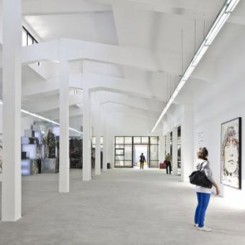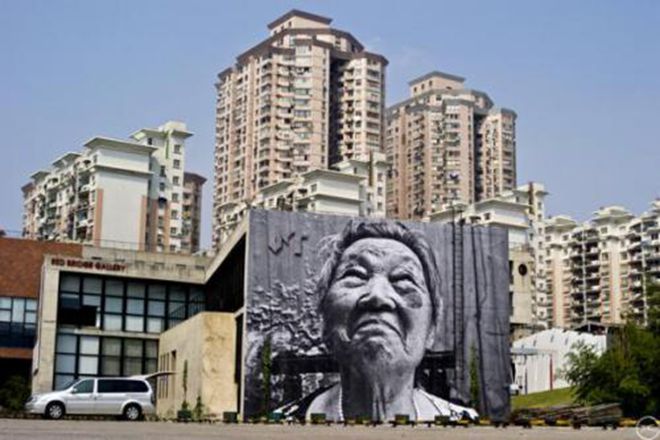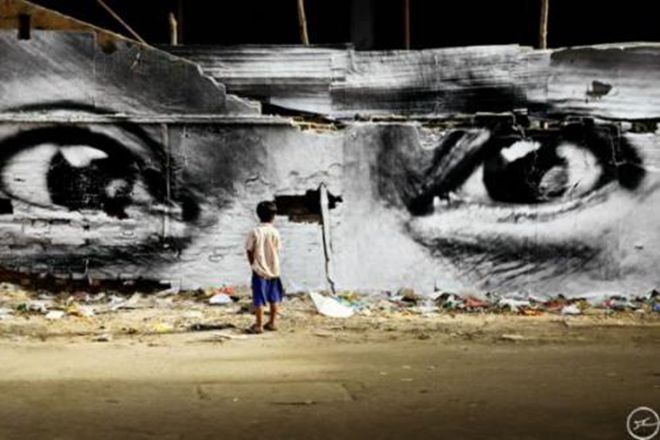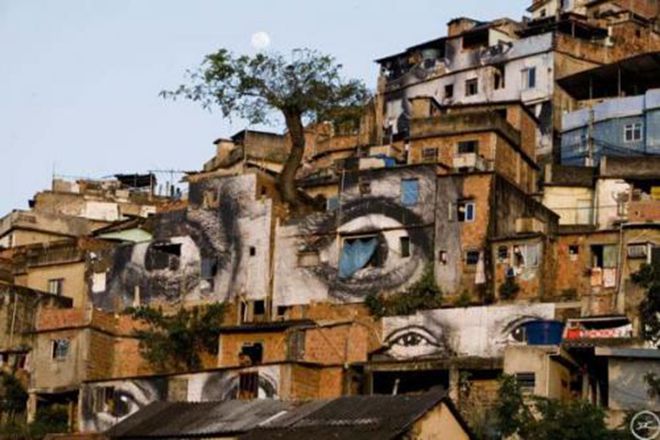After a disagreement with Bund 18 Management, former art director of 18 Gallery, Magda Danysz, is opening her gallery in a new creative cluster in Yangpu.
In January 2012, after two and half years together and over 20 exhibitions, Magda Danysz and 18 Gallery have parted ways. The new art director of 18 Gallery is Mian Mian, a well-known Shanghainese celebrity-writer who is known for her uncomplicated novels which glorified a certain subset of fast-living Chinese youth (among others). Mian Mian has been dabbling in the curatorial side of things for a number of years, sometimes collaborating with Qiu Anxiong and his Museum of the Unknown.
Since the split, much has been made of 18 Gallery’s name. Last week Bund 18 released a very strongly worded statement confirming that the name 18 Gallery has always been under their sole proprietorship and threatened legal action if Danysz assumes any further association with the name 18 Gallery. Danysz would not comment further on the uproar. She has recently been referring to her new Shanghai gallery as MD Gallery.
This inauspicious departure is not the first in 18 Gallery’s history. Prior to Danysz, the gallery was run by Korean curator Kim Sunhee, who apparently left under mysterious circumstances. Danysz will now be the owner and director of two art galleries, one in Shanghai and the other in Paris. Known for exhibiting the work of a range of international artists (as well as emerging and established Chinese artists such as Zhang Dali, Yang Yongliang and Wang Keping), she will now be working out of a former textile factory at 188 Linqing Road near the Yangpu Bridge in Shanghai.
Squirreling away in an as-yet unknown part of town is not an obvious choice for Danysz but she is convinced that the site will attract and maintain the attention of buyers, collectors and art lovers. She reports that her existing collectors are already interested in 188’s factory ambiance, the surrounding lanes and the rough and tumble of a working district.
The developer of the 188 property is Shangtex, the same company that brought M50 and Taopu into being. Last year, Shangtex began to re-develop a collection of their buildings at 188 and together with government types associate the district with art. The numerical address (188) of this up-and-coming art district has lent the project the nickname, yao ba ba, a moniker that might not disappear as the project grows.
At the moment, Danysz’s gallery is 188’s only occupant but more artists and galleries have shown interest in the range of spaces still under construction. “The developers had a vague idea of a creative park,” says Danysz, “When I arrived, it hit them that it could be about contemporary art.” Danysz has acquired 188’s largest exhibition space. This means she is now responsible for double the footage and height of 18 Gallery. It will be no small task to fill the space.
Known for exhibiting street art, Danysz’s gallery will exhibit the work of Portuguese graffiti artist, VHILS, who has already been in Shanghai for six months completing outdoor “interventions” on building walls at various sites around the city. Other graffiti artists use spray paint (Jonone) or over-sized photos (JR); however, VHILS manipulates vertical, exterior surfaces by carving into concrete, bricks and mortar.
With his signature use of mechanical chipping and manual scratching as well as layers of paint and chemicals, VHILS’s stark yet subtle portraits of local Shanghainese emerge from walls on a giant scale with haunting realism. Although all the subjects are current residents of Shanghai, each portrait hints of a bygone revolutionary era. This is not a coincidence. His father’s stories about Portugual’s bloodless military coup have retained their vitality in VHILS’s memory.
One of his outdoor works is located on an exterior wall of 188, near the entrance of Danysz’s gallery. Especially for 188’s inaugural exhibition, VHILS has also completed portraits on paper, old wood, scrap metal and antique objects — all of which can be exhibited indoors. Good thing too — there are a lot of interior walls to fill.
It should be a good anchor for the creative cluster, but time will tell whether it can attract other galleries. At the same time, there is also the nagging question of whether Magda’s poshly dressed and hip crowd will follow her to the wilds of Yangpu.



